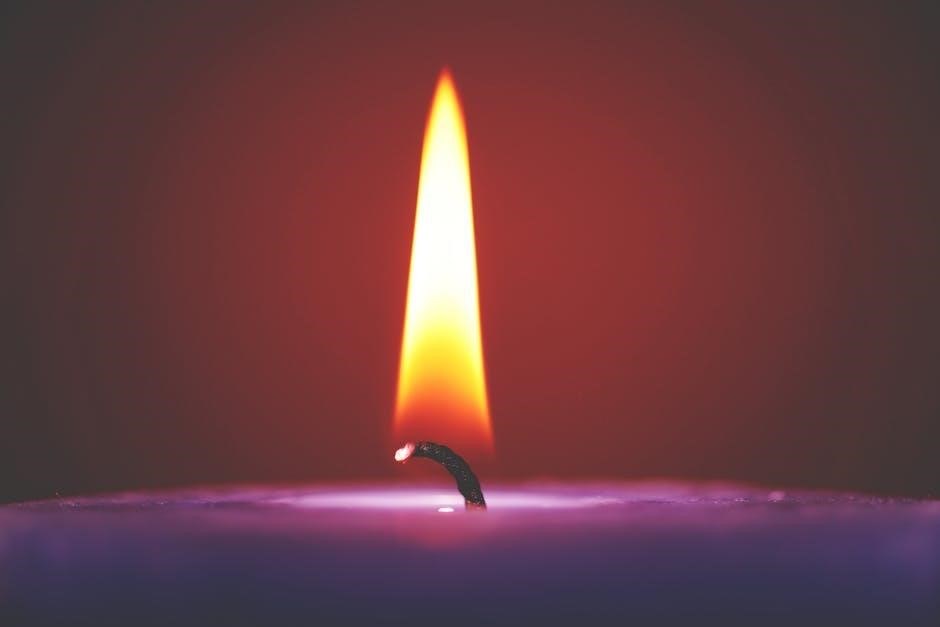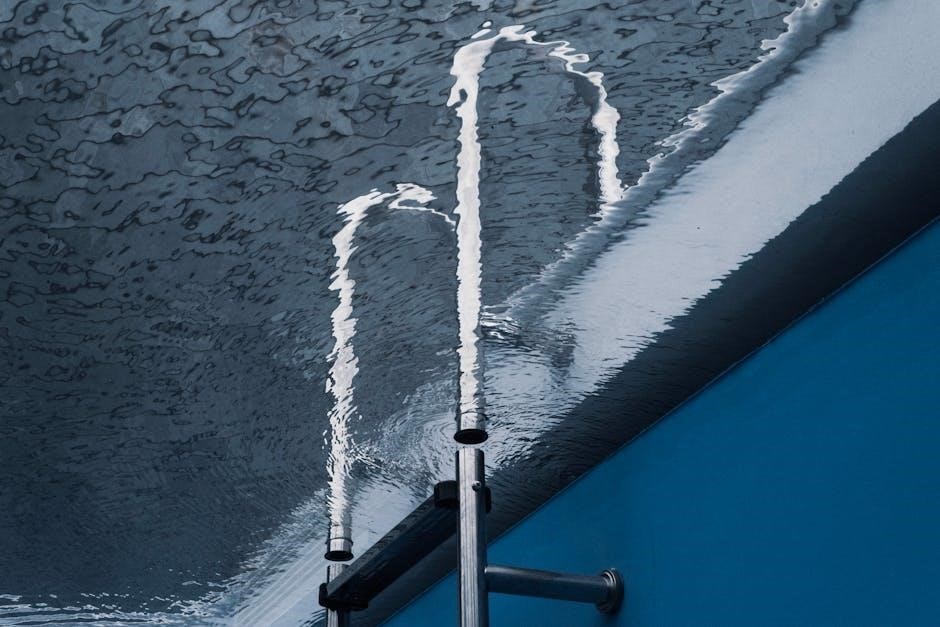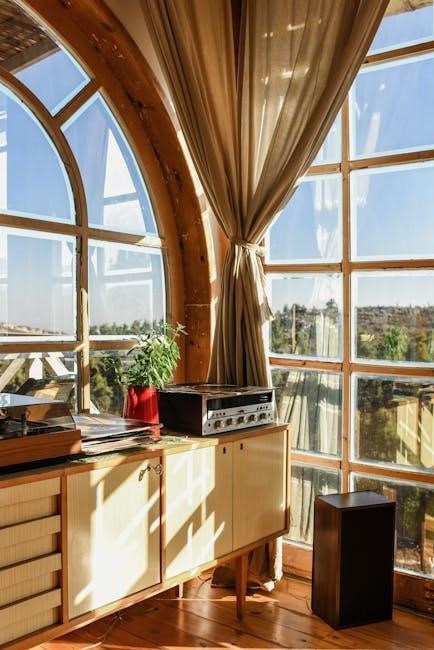Selecting the right wick is crucial for optimal candle performance. This guide helps you understand the importance of wick selection and provides essential tips for DIY candle making.
Discover how wax type, container size, and fragrance load impact your choice. Learn to test and optimize wicks for a perfect burn every time.
Why Wick Selection is Important
The wick is the heart of a candle, directly affecting burn performance and safety. Proper selection ensures even melting, prevents soot, and maximizes fragrance release. A wrong wick size can lead to uneven burns, poor scent throw, or even safety hazards. Variables like wax type, fragrance load, and container size influence wick choice. Testing and optimization are crucial for optimal results, ensuring your candle burns cleanly and efficiently. This guide helps you make informed decisions for the best candle-making experience.
Purpose of the Wick Guide
This guide simplifies wick selection, offering step-by-step recommendations and troubleshooting tips. It covers essential factors like wax type, container size, and fragrance load to ensure optimal performance. By following this guide, candle makers can minimize trial and error, achieving consistent burns and professional results. Whether you’re a beginner or experienced crafter, this resource helps you choose the perfect wick for your unique candle projects, ensuring safety, efficiency, and a premium finish.

Factors Influencing Wick Selection
Wick choice depends on wax type, container size, fragrance load, and dye type. These elements ensure proper burning, preventing issues like soot or uneven melting.
Wax Type and Its Impact on Wick Choice
The type of wax significantly influences wick selection. Different waxes, such as soy, beeswax, or paraffin, have varying densities and melt points. A soy wax candle, for instance, may require a smaller wick to prevent excessive flame size, while paraffin wax might need a larger wick for optimal burn. It’s essential to match the wick size to the wax type to ensure even burning and minimize soot formation. Proper wick selection enhances the candle’s performance and longevity.
Container Size and Shape Considerations
Container size and shape play a critical role in wick selection. Larger containers require a larger wick to ensure an even burn, while smaller containers need a smaller wick to prevent overheating. The shape of the container also affects airflow and heat distribution. For example, wide containers may need a wick that promotes better airflow, while tall containers may require a wick that maintains a consistent burn without producing excessive heat. Proper consideration ensures a balanced and efficient burn.
Fragrance Load and Its Effect on Wick Performance
Fragrance load significantly impacts wick performance. A higher fragrance load increases the burn rate, requiring a larger wick to maintain a steady flame. Too much fragrance can cause the wick to become overwhelmed, leading to a larger, less controlled flame. Conversely, too little fragrance may result in an inconsistent burn. Balancing fragrance load with the appropriate wick size ensures proper combustion and prevents issues like sooting or uneven burning. Testing is essential to find the optimal wick for your specific fragrance concentration.
Dye Type and Color Consistency
Dye type and color consistency play a role in candle aesthetics and wick performance. Certain dyes may interact with wax or fragrance, affecting how evenly the candle burns. Consistent color ensures a visually appealing product, while improper dye selection can lead to uneven burning or wick issues. Testing different dyes with your wax and fragrance combination helps maintain color uniformity and optimal wick function. Proper dye selection contributes to both the appearance and performance of your candle, ensuring a satisfying user experience.
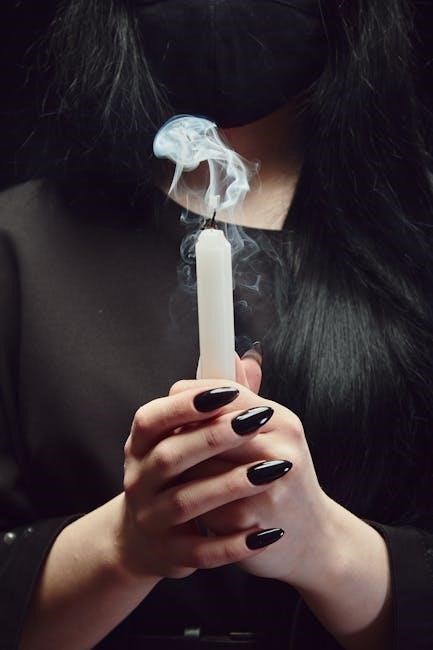
Burn Rate Chart and Recommendations
A burn rate chart guides wick size selection based on container diameter and wax type. It ensures consistent burning and even wax consumption. Adhering to recommendations enhances candle performance and safety.
Understanding the Burn Rate Chart
A burn rate chart is a reference guide that helps determine the appropriate wick size for different container diameters and wax types. It considers factors like wax type, fragrance load, and container size to ensure consistent burning. By following the chart, you can achieve even wax consumption and a clean burn. The chart is essential for optimal candle performance and safety, though results may vary based on specific formulations.
Wick Length and Diameter Recommendations
Wick length and diameter are critical for proper burning. Typically, wick lengths range from 27mm for tealights to 150mm for larger containers. Diameter varies based on wax type and jar size. Ensure the wick is centered and straight for consistent performance. Always test your wick size to prevent uneven burning or soot. Proper wick sizing enhances safety and ensures a clean, even burn, making it essential for high-quality candles.

Testing and Optimizing Your Wick
Testing is crucial to ensure your wick performs optimally. Start by burning the candle and observing the melt pool and flame height. Adjust the wick size or type based on results to achieve a clean, even burn. Proper testing ensures safety and enhances the overall quality of your candles.
Step-by-Step Testing Process
Begin by lighting the candle and allowing it to burn for 2-3 hours to observe the melt pool and flame height. Note any issues like soot or uneven burning. Adjust the wick size or type based on these observations. Repeat the process until a consistent, clean burn is achieved. Testing ensures the wick performs well with your specific wax, fragrance, and container combination. Document results for future reference and to refine your candle-making process.
Interpreting Test Results for Optimal Performance
Analyze the burn results to assess wick performance. A clean, steady flame indicates a well-suited wick. If the flame is too high, the wick may be too large. A low flame suggests a smaller wick is needed. Look for even wax consumption and minimal soot. Adjustments may involve changing the wick size or type. Proper interpretation ensures a balanced burn, enhancing both the candle’s appearance and longevity. This step is crucial for achieving consistent, high-quality results in your candle-making projects.
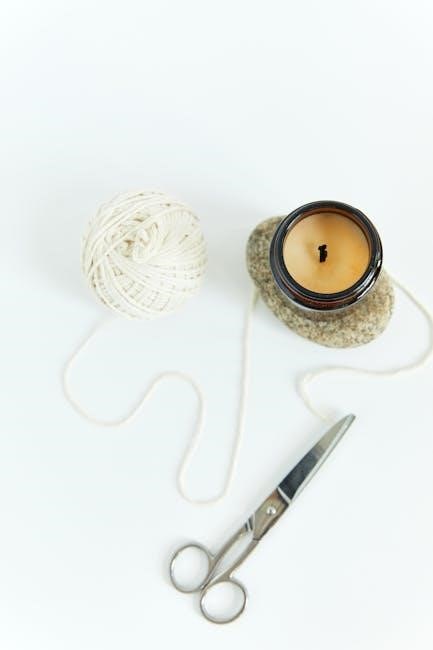
Common Mistakes to Avoid
Avoid selecting the wrong wick size, ignoring wax compatibility, and not testing fragrance loads. These oversights can lead to poor burn quality and reduced candle lifespan.
Incorrect Wick Size Selection
Choosing the wrong wick size is a common mistake that can lead to uneven burning, poor performance, and reduced candle lifespan. A wick that’s too small may not melt the wax evenly, while one that’s too large can cause excessive flickering or soot. Ensure the wick size aligns with your wax type and container diameter. Refer to a burn rate chart for guidance. Testing different wick sizes is crucial to achieve the perfect burn. Avoid guessing and use a systematic approach for optimal results.
Ignoring Wax and Fragrance Compatibility
Overlooking wax and fragrance compatibility can significantly affect wick performance. Different waxes, such as soy or paraffin, have unique properties that require specific wick types. Similarly, high fragrance loads can clog the wick, causing poor burn quality. Always test your wax and fragrance combination to ensure compatibility. Failure to do so may result in an inconsistent burn, reduced scent throw, or even safety issues. Proper compatibility ensures a clean, efficient, and enjoyable burning experience for your candles.
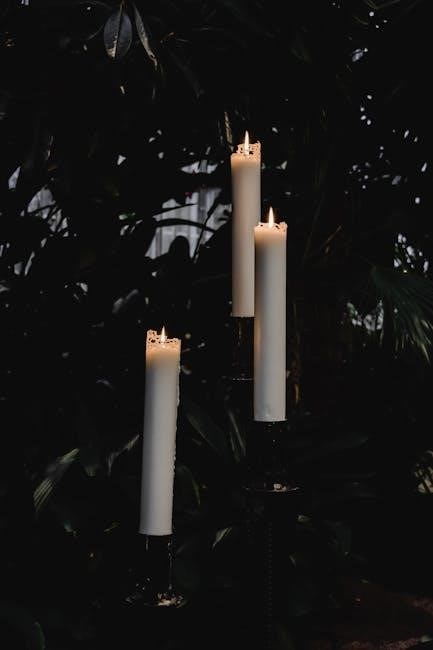
Troubleshooting Wick Issues
Common wick problems include uneven burning, sooting, or poor fragrance throw. Address these by adjusting wick size, testing wax compatibility, or ensuring proper curing time.
Solving Common Burning Problems
Address uneven burning by ensuring proper wick size and alignment. Sooting can be resolved by shortening the wick or using a cleaner-burning wax. For poor fragrance throw, check fragrance load compatibility. Ensure the candle cures fully before use. Avoid drafts, as they can disrupt even burning. Regularly trim wicks to maintain optimal length. Testing and adjusting these factors will help achieve a consistent, smooth burn.
Adjusting Wick Size for Better Performance
Adjusting wick size is key to resolving burn issues. If the wick is too large, it may cause excessive soot or a too-high flame. A smaller wick can create a cleaner burn. Conversely, a wick that’s too small might result in a dim flame or incomplete wax pooling. Test different wick sizes to find the ideal fit for your candle’s wax type and fragrance load. Proper adjustment ensures a smooth, even burn and maximizes performance.
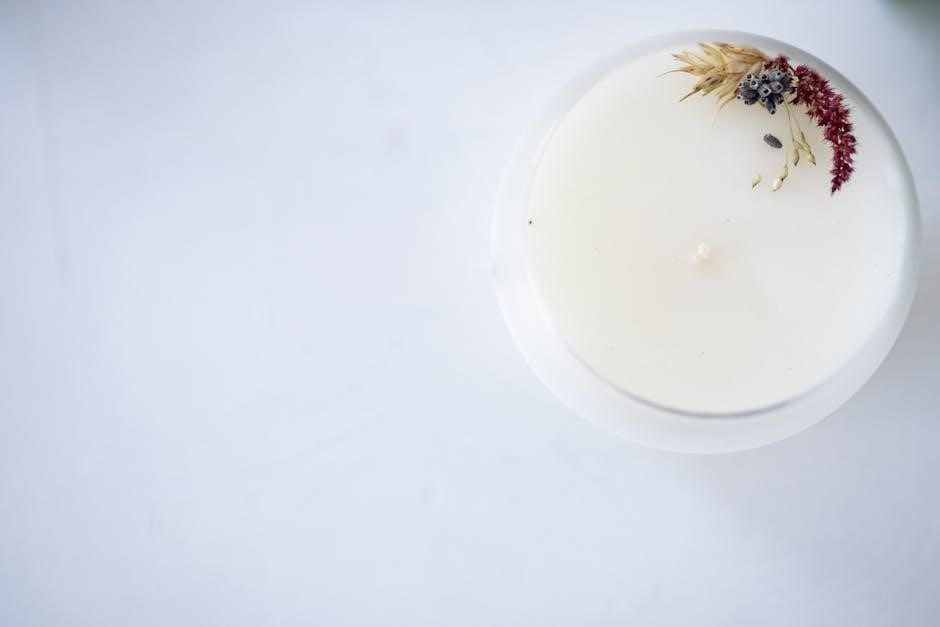
Tools and Materials Needed
Essential tools include wick trimmers, thermometers, and burn rate charts. Materials like wick samples, wax, and fragrance oils are crucial for testing and optimization;
Essential Tools for Wick Testing
To ensure accurate wick testing, essential tools include wick trimmers for consistent length, thermometers to monitor wax temperature, and a burn rate chart for tracking performance.
- A ruler or measuring tape for precise wick length adjustments;
- A stopwatch to time the burn rate accurately.
- A clean, stable workspace to prevent external interference during testing.
Materials Required for Optimal Wick Performance
For optimal wick performance, high-quality materials are essential. Use wax types like soy, beeswax, or paraffin, each requiring specific wicks. Fragrance oils must be compatible with the wax to ensure consistent burn. Dyes should maintain color consistency without hindering performance. Wick materials vary—cotton, paper, or synthetic fibers—depending on wax and fragrance load. Ensure wicks are appropriately sized and made from durable materials for even burning for a clean burn.
Selecting the right wick is vital for a perfect burn. Consider wax type, container size, and fragrance load to ensure optimal performance. Experiment, learn, and enjoy crafting unique candles!
Final Thoughts on Wick Selection
Choosing the right wick is a cornerstone of successful candle making. It ensures even burning, prevents soot, and enhances fragrance throw. Each wax type, fragrance load, and container size requires careful consideration to avoid performance issues. Experimentation is key, as results may vary based on specific formulations. Patience and testing will guide you to the perfect wick for your unique creations. Remember, the wick is more than a component—it’s the heart of your candle’s performance and aesthetic appeal.
Encouragement to Experiment and Learn
Experimentation is the heart of mastering wick selection. Don’t hesitate to try different wicks and observe their performance. Keep records of your tests to refine your process. Embrace the journey of learning, as it fosters creativity and ensures the best results for your candles. Remember, patience and persistence are key to achieving perfection. With each trial, you’ll gain valuable insights and develop a deeper understanding of the intricate relationship between wax, fragrance, and wick.
